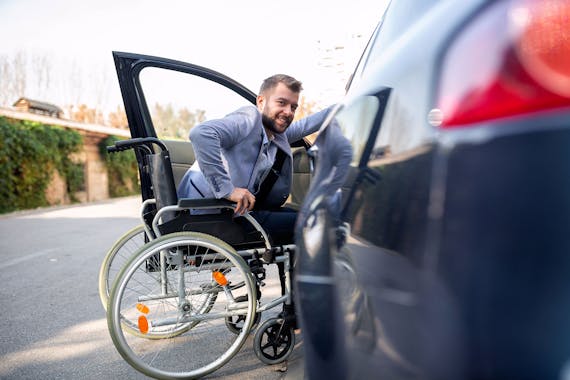Considerations for drivers or passengers with disabilities

There is a growing consideration of mobility for disabled people in the automotive industry, and an increasing number of options available. But whether you’re disabled, or need to carry disabled passengers, there are a number of things to factor in when choosing the right vehicle.
Numerous models have features to make driving easier. And if you need something to meet your specific requirements, there are also plenty of companies who can help you make special adaptations to your car – even something bespoke to your particular needs.
How should I choose a car to drive if I have a physical disability?
When choosing your car to drive yourself, have good think about all the things you’ll need to help you stay safe and comfortable behind the wheel.
Consider every aspect of using the car, from getting in and out of it, driving, how much space you’ll need for yourself, your passengers and any specialist aids, such as wheelchairs.
Of course, you need to choose a car using the same criteria as everyone else – the initial purchase price, running costs, the car’s efficiency and safety ratings – so you need to do the same kind of research as any other car buyer.
You also need to test a car before buying. You can do this at a standard dealership or take advantage of the numerous opportunities to have a car delivered to you for a test drive. Alternatively, if you need a car that is adapted, you can either try it out at a company that specialises in this kind of work, or at a mobility centre or roadshow event.
Once you’ve chosen a car, you should make sure that you can get used to it with help – perhaps a driving instructor can give you lessons with the adaptations. Either way, make sure you're accustomed to them before taking delivery of the car.
What car controls should I consider?
Almost any car can be adapted to any kind of specific need, so it's important to get a clear idea of how you want your car to be adapted so it works for you.
You need to think about your abilities and how these translate in your requirements for the car. Do you need extra hand controls, steering controls or pedal extensions? Does the car need to be adapted or converted? The most important thing to remember is that the controls should be adapted to suit you, rather than you having to adapt to the controls.
They need to be within reach, easy to use and it should quickly feel like second nature to drive. Like any other driver, you should feel comfortable and relaxed when driving, so the controls have to make this possible.
There’s lots of available specialist advice out there, so take advantage of it to help you make the right decisions.
What should I consider when choosing a car to carry disabled passengers?
If you’re choosing a car to drive a disabled passenger – whether an adult or a child – you should also get as much advice as possible from people who are experienced in the field, such as at a mobility centre.
One of the key issues is making it as easy as possible to get in and out of the vehicle. Wide and high door openings will make this much easier, so look for a car that has these features – such as a people carrier or SUV.
It might be possible to lift the passenger (especially a child) into and out of the car, so you might want to look for a vehicle with higher seats, which means you won't have to bend down quite so far.
There are a number of methods that can help disabled passengers get in and out of the car. One is transfer boards, which bridge the gap between the wheelchair and car seat, allowing the user to slide from the wheelchair into the seat. Alternatively, there are adaptations that can help such as transfer or tip-up plates, which are like transfer boards, but they’re permanent fixtures in the car. There are even seats that swivel out to 90 degrees.
What are wheelchair accessible vehicles?
Wheelchair accessible vehicles (WAVs) can either accommodate wheelchair-using drivers or passengers.
If you drive, a WAV can be adapted around you and your wheelchair, so it might have automatic doors, ramps and docking systems, and you can either stay in your wheelchair to drive or move on to a swivelling driver’s seat.
For passengers, a WAV is better often a better option than getting in and out of a wheelchair and into a car seat. Some WAVs can take one wheelchair with room for other passengers, while others can be adapted to take more than one wheelchair. Ramps or lifts tend to be the main ways of allowing wheelchair users to access the vehicle, but in some cases, winches might also be fitted. Inside, a tie-down system will hold the wheelchair in place, to keep the user safe.
Make searching and staying updated even easier.